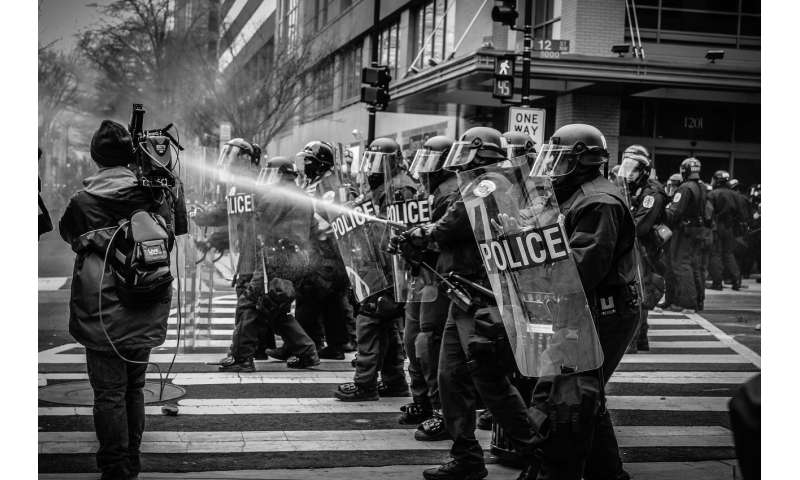The fury in US cities is rooted in a long history of racist policing, violence and inequality
The protests that have engulfed American cities in the past week are
rooted in decades of frustrations. Racist policing, legal and
extra-legal discrimination, exclusion from the major avenues of wealth
creation and vicious stereotyping have long histories and endure today.
African
Americans have protested against these injustices going back as far as
the post-Civil War days in the 1870s. Throughout the 20th century, there
were significant uprisings in Chicago (1919), New York City's Harlem
neighbourhood (1935), Detroit (1943) and Los Angeles (1943, 1965, 1992).
And in what became known as the "long, hot summer of 1967", anger in America's cities boiled over. The Civil Rights Act
of 1964 had ended segregation, but not brought equality. Racial
injustice at the hands of police remained. Protesters took to the
streets in more than 150 cities, leading to violent clashes between black residents and largely white police forces.
White moderates condemned these armed rebellions as the antithesis of
the famed nonviolent protests of civil rights activists. But Martin
Luther King, Jr., himself, recognized that the success of nonviolence
lay in the ever-present threat of violence.
He noted, too, that riots "do not develop out of thin air."
Policing practices a trigger for unrest
The trigger for African-American uprisings in the US has almost always been acts by police forces, such as the recent death of George Floyd in Minneapolis.
Sometimes, unrest has broken out when police have refused to act on
behalf of black residents. When an African-American teenager drifted
into the "white" part of Lake Michigan in Chicago in 1919, for instance, a white man on the banks threw rocks at him and he drowned. A policeman did nothing to stop the assailants, nor did he arrest them.
discriminated against by society at large, property damage and looting
were justified.
In the century after slavery ended in 1865, white Americans had established new ways to exploit black people's labor and keep African Americans impoverished. These methods ranged from legislation governing work contracts and mobility to racist stereotyping.
Such laws and customs were all underpinned by violence, including murder. From the late 1800s until 1950, more than 4,000 African Americans
were victims of lynchings. They were so acceptable they were sometimes
advertised in the press in advance. These were extra-judicial killings,
but often included the police (or they would at least turn a blind eye
to the proceedings).
Black Americans who sought better lives in northern cities found
racism there, too. White landlords had a captive market in segregated
neighborhoods, such as New York's Harlem and Chicago's South Side, which
caused them to become increasingly crowded and rundown.
African Americans were often kept out of nicer neighborhoods in
cities nationwide, either through violent acts perpetrated by white
residents or even by police officers themselves. The houses of
middle-class black Americans in the Birmingham, Alabama, suburb where
political activist and philosopher Angela Davis grew up were bombed so
often the area was nicknamed "Dynamite Hill".
Even the presence of black officers in the police forces of northern cities could not alter the fundamentally racist operations of police forces.
............

